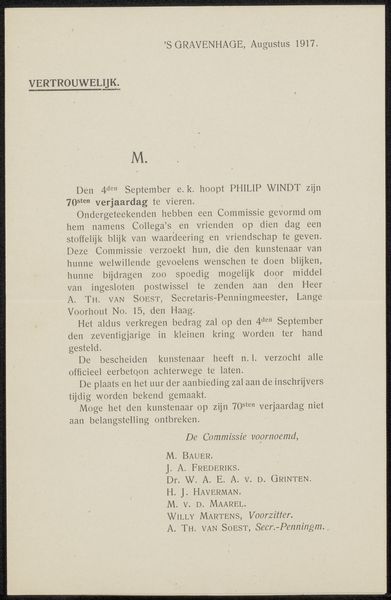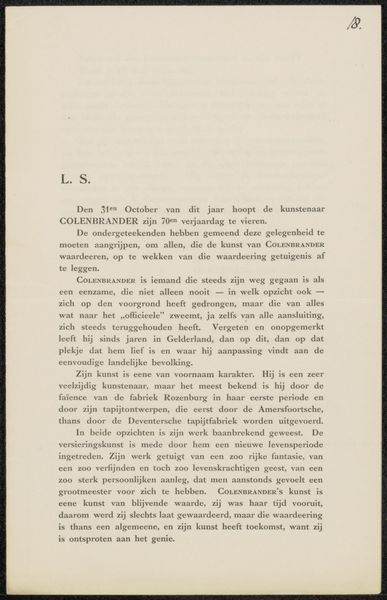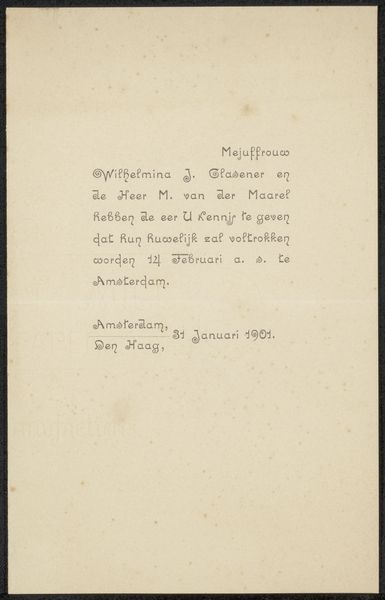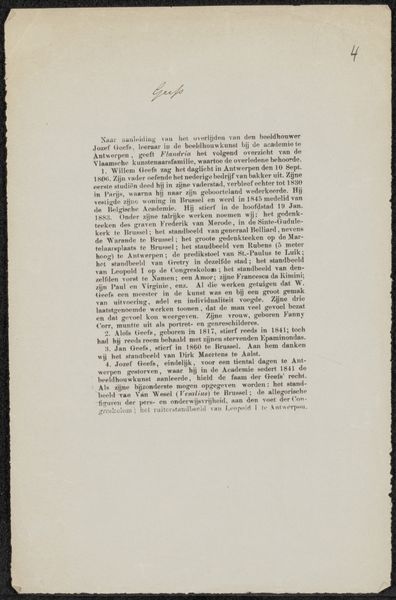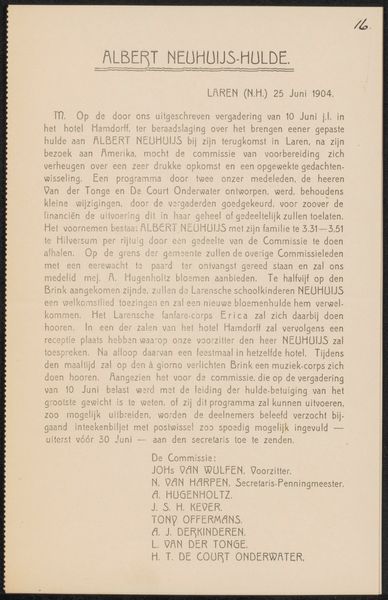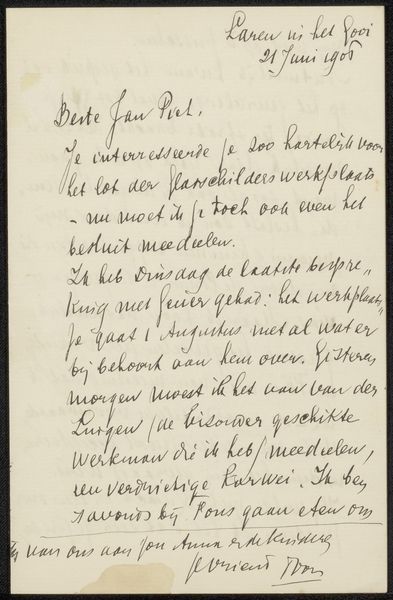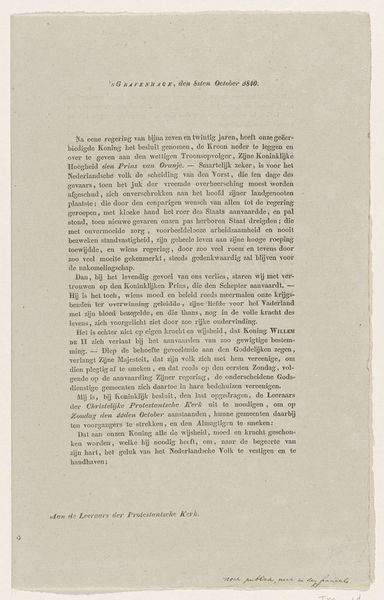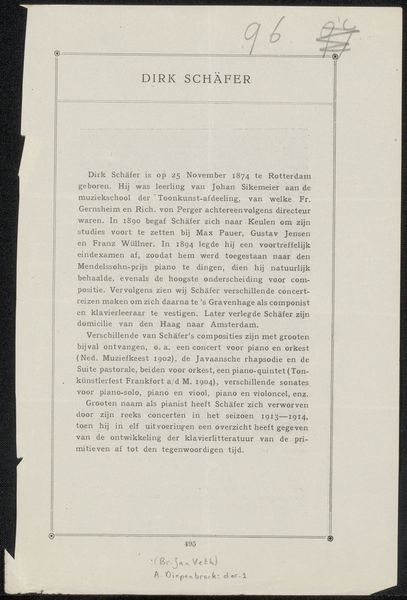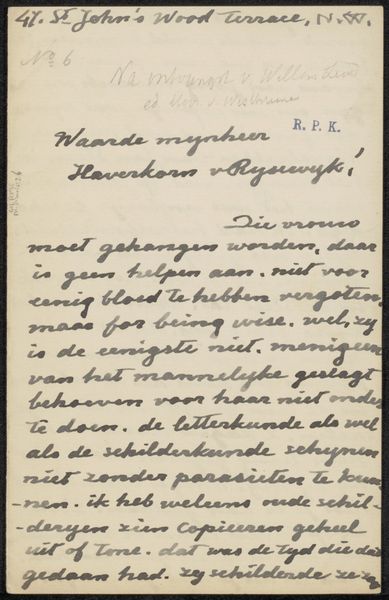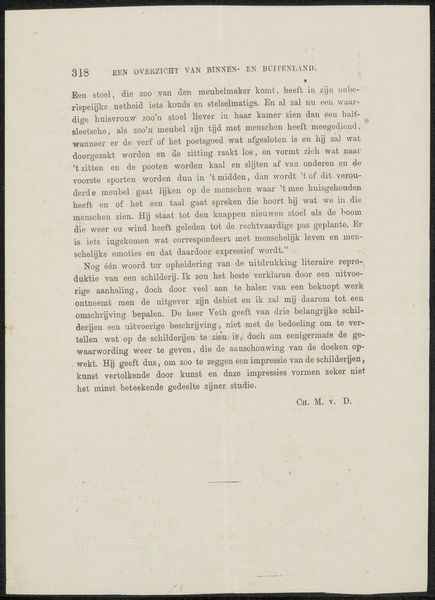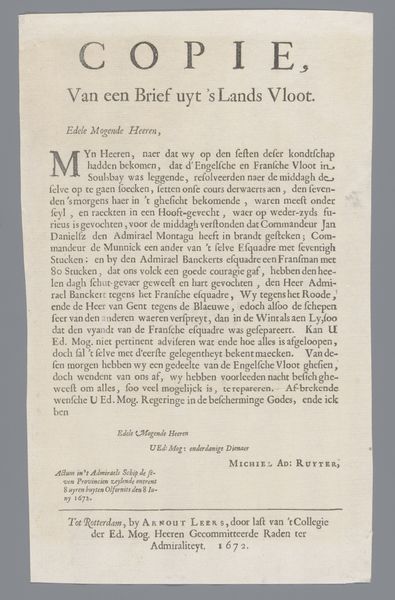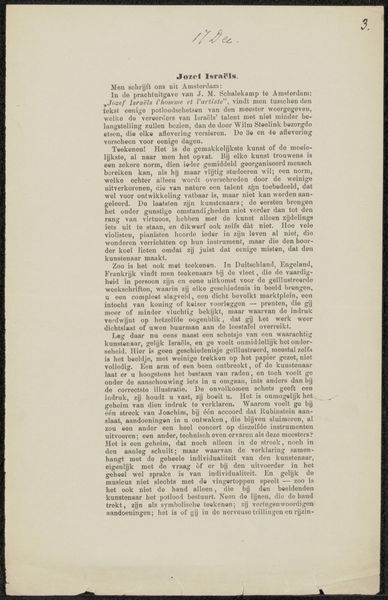
Brief betreffende het borstbeeld van Charles Rochussen aangeboden ter gelegenheid van zijn zevenstigste verjaardag 1888
0:00
0:00
johanconradgreive
Rijksmuseum
print, paper, photography, sculpture
#
portrait
# print
#
paper
#
photography
#
sculpture
Copyright: Rijks Museum: Open Domain
Curator: We're looking at a document titled "Brief betreffende het borstbeeld van Charles Rochussen aangeboden ter gelegenheid van zijn zevenstigste verjaardag," which roughly translates to "Letter Concerning the Bust of Charles Rochussen Offered on the Occasion of His Seventieth Birthday." Editor: My first impression is one of institutional record-keeping—everything about the layout seems meticulously arranged, giving an air of detached observation. Curator: Quite right. This print, created around 1888, functions as an announcement from the board of the "Arti et Amicitiae" society, likely regarding the placement of a bust of Charles Rochussen within the Rijksmuseum. The piece combines print with what appears to be photography, offering a material record of cultural and artistic patronage. Editor: The rigid columns of text suggest a bureaucratic process far removed from the act of art creation itself. And the document implicitly excludes broader public access by containing detailed information about the internal financial decisions within the organization. Did those decisions, by chance, dictate which artists would become the arbiters of Dutch culture at the time? Curator: Perhaps so, but observe how the typography is constructed: The classical Roman typefaces, coupled with wide letter spacing, are evidence of formal planning, evoking stability and cultural prestige. The deliberate choice of paper and the careful arrangement on the page signal importance. Editor: While I concede your points about deliberate arrangement, that very formality acts as a type of visual gatekeeping. These structures frequently act to centralize cultural power. We are left to wonder who exactly the society served by investing in this particular bust, and whether more marginalized figures would have benefited from some other allocation of funds. Curator: We could also consider the choice of portraiture itself. By commissioning a bust and documenting it, "Arti et Amicitiae" cements Rochussen's legacy within art history. The clean lines, the balanced asymmetry: Each contributes to a harmonious image designed to elicit calm approval, as well as to signal refinement. Editor: It makes you wonder: How much artistic control did Rochussen, the sculptor, or even the photographer have in representing him in this piece? Regardless, this is just another of what I imagine would have been a series of choices meant to ensure he joined the ranks of celebrated artists. Curator: A worthwhile reflection—one further complicated by the photograph itself, where art meets documentation. It captures a likeness and elevates it through this very medium. Editor: It's certainly interesting how what looks like simple correspondence reflects so many social and structural decisions about artmaking in 1888.
Comments
No comments
Be the first to comment and join the conversation on the ultimate creative platform.
